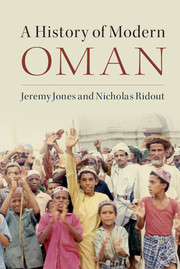Book contents
- Frontmatter
- Contents
- List of Figures
- List of Maps
- Acknowledgements
- Map
- Introduction
- Part One Foundations
- Part Two Modern History
- 4 The Sultanate as Nation, 1932–1959
- 5 Dhofar
- 6 Oil, Government and Security, 1955–1980
- 7 Shura, Diplomacy and Economic Liberalisation, 1980–2000
- 8 Oman in the Twenty-First Century
- Bibliography
- Index
7 - Shura, Diplomacy and Economic Liberalisation, 1980–2000
from Part Two - Modern History
Published online by Cambridge University Press: 05 September 2015
- Frontmatter
- Contents
- List of Figures
- List of Maps
- Acknowledgements
- Map
- Introduction
- Part One Foundations
- Part Two Modern History
- 4 The Sultanate as Nation, 1932–1959
- 5 Dhofar
- 6 Oil, Government and Security, 1955–1980
- 7 Shura, Diplomacy and Economic Liberalisation, 1980–2000
- 8 Oman in the Twenty-First Century
- Bibliography
- Index
Summary
Historical overviews of Oman since the 1970s almost invariably remark upon the speed of social and economic change. Many Omanis, particularly those older than about forty who have clear memories of what life was like in their own childhoods, also comment on how rapid and comprehensive the transformation of their country has been. A familiar trope is to contrast an Oman of the past, in which there were only three schools, few roads and a supposedly isolated tribal society, with the modern metropolis of Muscat in the late twentieth and early twenty-first century, with its shopping malls and ubiquitous mobile phones. Such accounts tend to lend credence to versions of Omani history that make 1970 a unique turning point and designate the recent past as a ‘renaissance’. They also repeat the problematic logic of the ‘modernisation thesis’, which holds that all ‘developing nations’ are making their way towards a predestined state of modern development. As we have already seen, however, more discriminating histories tend to identify much stronger continuities between past and present, even as they recognise the extent of the social and economic transformation wrought with oil in recent decades. It is also noted, from time to time, that Oman has a more old-fashioned air than its other oil-rich neighbours. Muscat is not a high-rise city: municipal planning regulations have been used to shape a very different urban landscape from that of Abu Dhabi, Dubai or Doha. A sort of modern Omani vernacular has been developed in both public and private buildings, featuring predominantly white or pale walls, arched windows and crenellations apparently taken from the architecture of the country's forts. Most Omani citizens still observe the convention established during Sultan Qaboos's reign that national dress should be worn in public: this is particularly noticeable in government offices, but the white dishdasha with coloured cap or turban is still the outfit most frequently seen in the streets, malls, cafés and other public spaces in Muscat.
- Type
- Chapter
- Information
- A History of Modern Oman , pp. 195 - 231Publisher: Cambridge University PressPrint publication year: 2015



